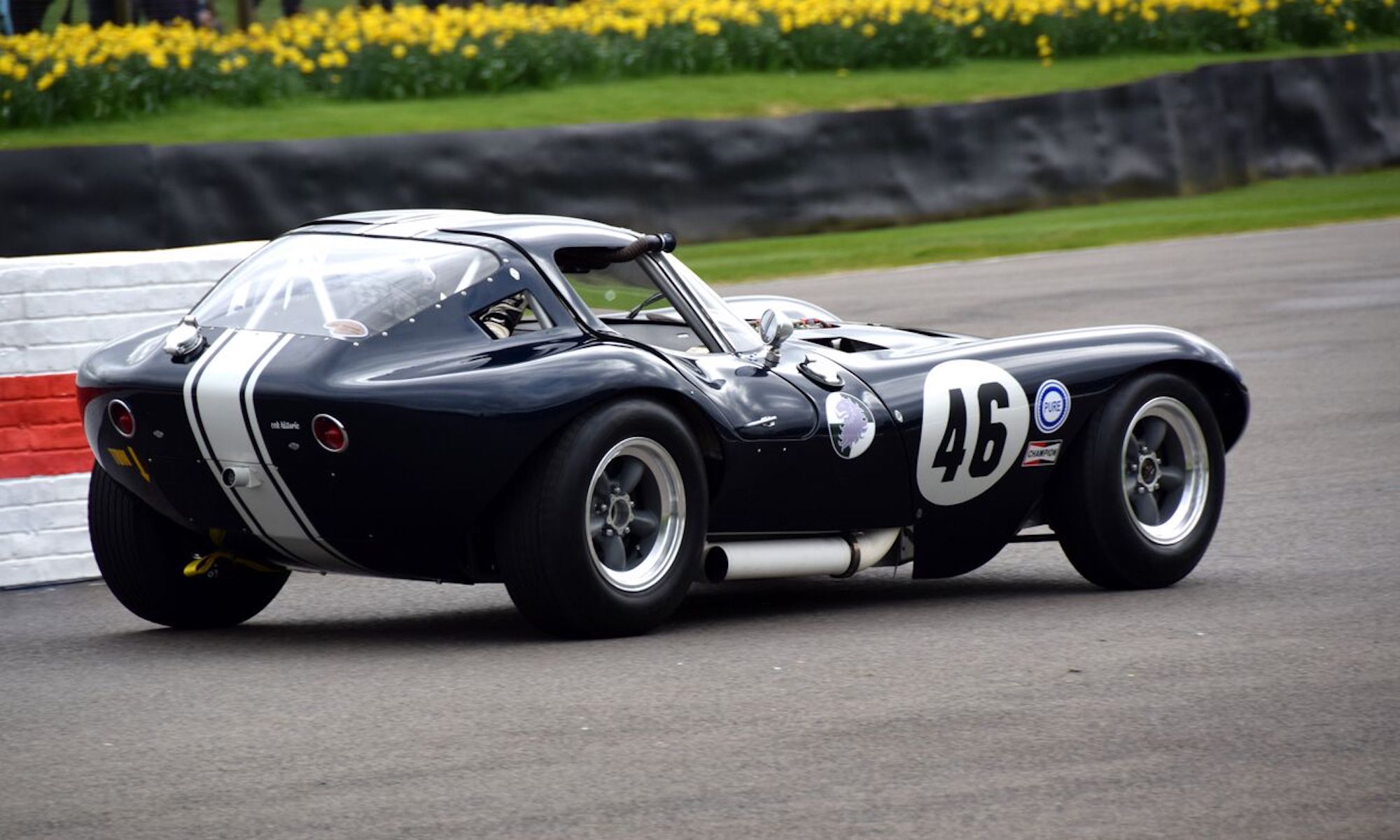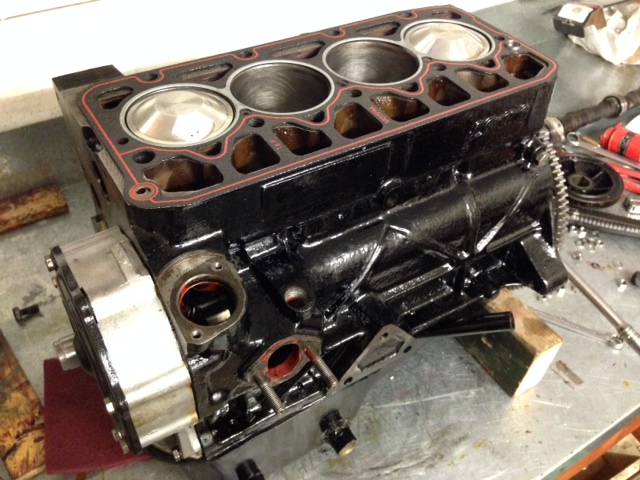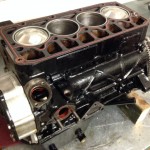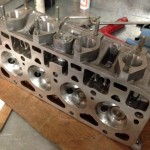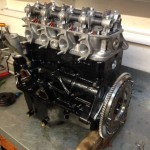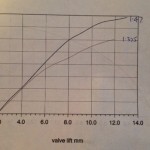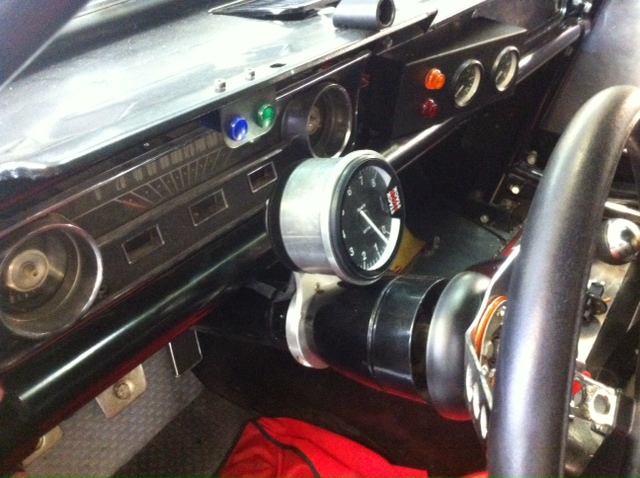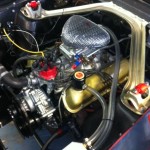Over the past weeks we’ve been developing a new Fiat race engine for the 1500. Along with steel rods and forged pistons we’ve developed a new camshaft profile and fully re-worked the cylinder head. The head features a hemi-spherical combustion chamber but the valves are angled towards each other. This means that too much overlap and the valves will collide with each other. Both the cylinder head and the camshaft have been developed side by side in order to maximize duration and lift without causing the valves to clash. Larger inlet valves have been sourced and combustion chambers and ports have been opened up and re-shaped. The result is a massive jump from 81cfm at 12mm lift to 96cfm on the inlet and a jump from 53cfm to 63cfm on the exhaust. We will find out what difference this will make when it goes on the dyno. Last time around this engine managed approximately 107bhp at the flywheel.
Further development for the FIA Mustang
After the initial shake down at Goodwood with Rupert Keegan a few areas were highlighted that needed some attention. The gearbox was tightened up a little. We changed the rear axle ratio from a 3:1 to a 3.55:1. We replaced the front springs with a stiffer set that were custom made for the application. A racing twin point distributor and Moroso coil have been fitted and a new Stack electronic rev counter. On Monday Rupert will be back behind the wheel again to see how the car performs.
